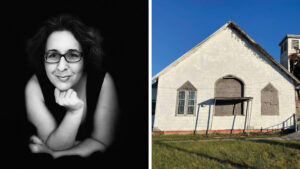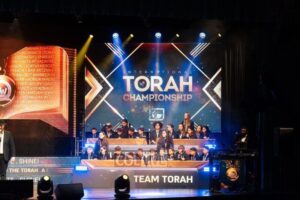A century ago, Reservoir Hill (though it was called something else) was the crown jewel of Baltimore’s Jewish community. The Whitelock Urban Farm sits on land that once housed sundry Jewish-owned businesses – a humming commercial hub bounded by dozens of Jewish institutions and a short walk from exquisitely verdant Druid Hill Park.
Those who know the history (and those who don’t but notice the undulating topography and exceptional housing stock) will often ask me how things are going in Beth Am’s neighborhood. “I hear the neighborhood’s coming back” some will say. Or they’ll ask: “Are people moving back in?”
These questions seem innocuous and are most definitely posed with good intentions – I’m sure the questioners don’t meant to imply the non-existence of people who live and have lived in this neighborhood for decades.
But the underlying assumption seems to be: Reservoir Hill was once great, and they’re anxious to hear when it will be again.
How is my neighborhood doing? It’s cleaner, safer and more vital all the time. The award-winning Dovecote Café (recently voted “best café” by Baltimore City Paper) is a vibrant gathering spot. John Eager Howard (some readers may remember it as School No. 61) renovations are underway. There are exciting new development projects in the works on North Avenue and Druid Park Lake Drive, and Beth Am is now in the design phase for our own renovation and construction project.
To keep this excitement in context, however, two things to keep in mind. First, neighborhood improvements are happening because of advocacy and engagement by Reservoir Hill Residents – not in spite of them. And our community is constantly contending with real questions of how best to rise together; Reservoir Hill is multicultural, multivalent and multi-vocal.
We count among our neighbors impoverished families in affordable rental properties, affluent home-owners, artists, educators and working class renters; we are Jewish, Christian, Muslim, Buddhist; we are black, white and brown. Our diversity is our strength when our flourishing is diverse.
Second, Reservoir Hill’s past greatness should be examined within its historical context. Which is to say, narratives of Jewish or African-American past and current thriving cannot be divorced from Baltimore’s legacy of block-busting and red-lining, troubling features of 20th-century urban development.
Jewish migration to/from/to this neighborhood is part of a complex and ever-unfolding story.
Key questions for healthy urban revitalization are these: What is the highest and best use of space and resources? How do we benefit more people? Which people? What is right? What is just? What would God want? There’s no lack of need and injustice in the world. Why should we care about Baltimore?
In a provocative piece, author Courtney Martin considers whether we Americans have become too caught up in what she calls “The Reductive Seduction of Other People’s Problems?” Martin highlights the many thousands of U.S. organizations doing charitable work in foreign countries. From gap-year service programs to alternative spring breaks, there is broad attraction to donating to and working in developing nations.
“If you’re young, privileged, and interested in creating a life of meaning,” she writes, “of course you’d be attracted to solving problems that seem urgent and readily solvable…. Of course you’d want to fly on planes to exotic locations with, importantly, exotic problems.”
But while most Americans’ attempts to “save the world” are well-intentioned, Martin points out two fundamental problems: First, she says, there’s risk for those whose problems we believe easy to solve. “There is real fallout when well-intentioned people attempt to solve problems without acknowledging the underlying complexity.”
Second, there is plenty of domestic need which goes largely unmet when our compassionate instincts are directed toward distant lands. “…The reductive seduction of other people’s problems is dangerous for the people whose problems you’ve avoided.” Rashi, the eleventh century Torah commentator, cites the Talmud’s protocol for triaging need: “Ani-ei ircha kodmim, the poor of your city first” (Bava Metzia 71a).
My plan for this regular column, titled “The New Jewish Neighborhood,” is to explore ways we might have deeper local impact by realizing Jewish values in heterogeneous contexts. My thesis? To better inhabit our Jewishness we must be expansive in our concept of community.
Baltimore’s greatness, like America’s greatness, is in its people. We Jews have flourished in this country and city because, despite real obstacles, here we have found a place to call home. So let’s start at home.
Making the world better requires making our neighborhoods better. And, wherever you live, city or county, making your neighborhood better requires making mine better too – and vice versa. Why? Because making Baltimore great means also identifying the parts of it that never were.
Daniel Cotzin Burg is rabbi of Beth Am Synagogue in Reservoir Hill where he lives with his wife Rabbi Miriam Cotzin Burg and their children Eliyah and Shamir. This column and others can also be found at www.TheUrbanRabbi.org. Each month in JMore, Rabbi Burg will explore a different facet of The New Jewish Neighborhood – a place where Jewish community is reclaimed and Jewish values reimagined in Baltimore.





